The border is a state of mind: Looking for the line that divides Ireland from Northern Ireland
First published February 1997: Robert Fisk visits the site of Bloody Sunday; and tries to find exactly where the border is

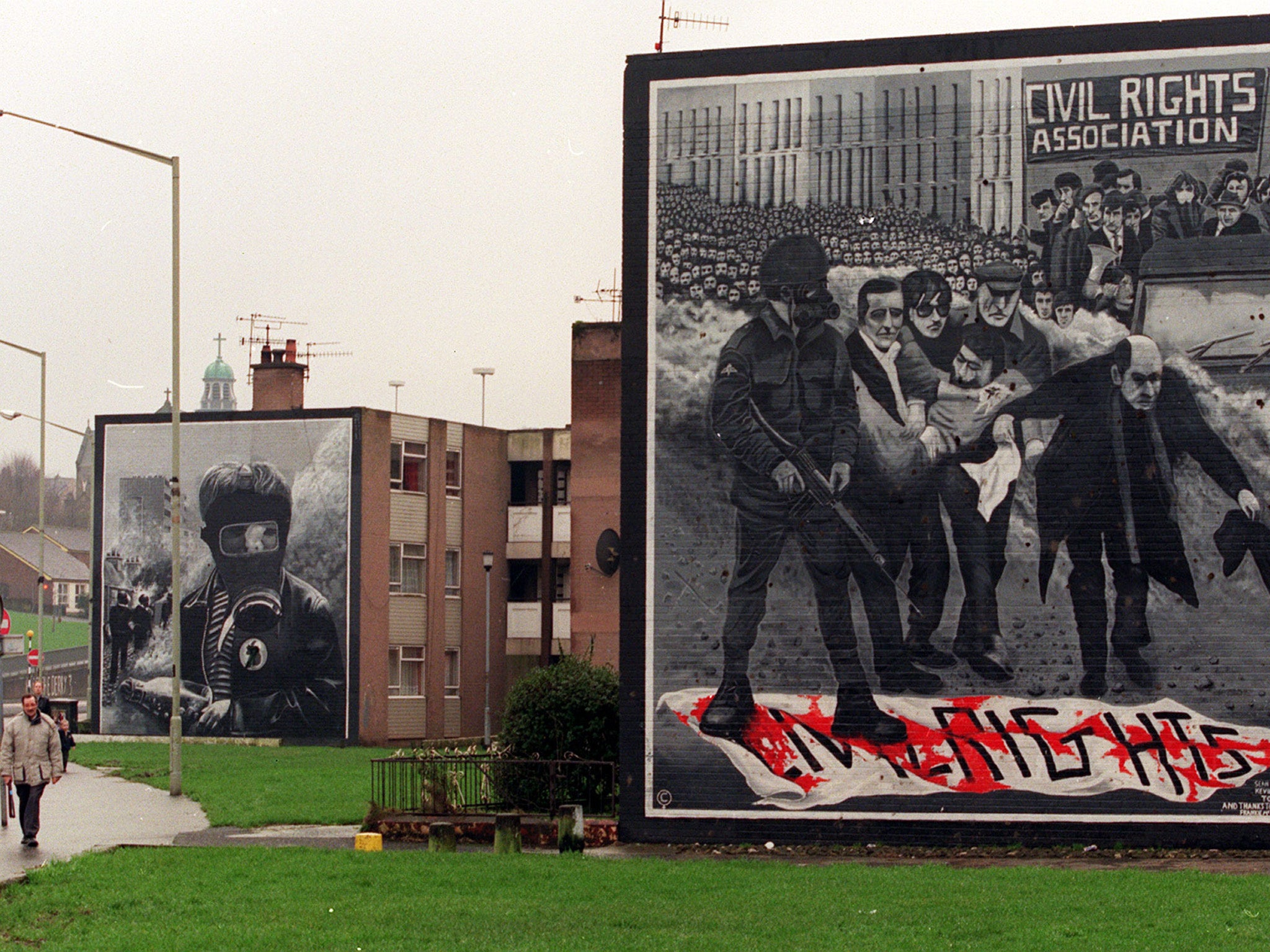
In the wall of a ground-floor apartment in Glenfada Flats, I found two bullet holes from Bloody Sunday, two gashes in the cheap stucco and cement to remind the Catholics of the Bogside of the power of a self-loading rifle fired exactly 25 years before by a member of the 1st Battalion the Parachute Regiment.
“There’s another hole round the corner in Chamberlain Street,” a young man told me. “Would you like to see it?” And he ran through a litany without invitation. The Paras, the 13 unarmed dead Catholic civil rights demonstrators – the 14th who died of wounds later – the Widgery Tribunal, the lies, the humiliation.
I told him I’d seen enough bullet holes in the Middle East and the Balkans these past 22 years, live rounds that had turned the walls of buildings in Beirut and Sarajevo and Kabul and Vukovar into Irish lace. I didn’t think one more bullet hole would make a lot of difference.
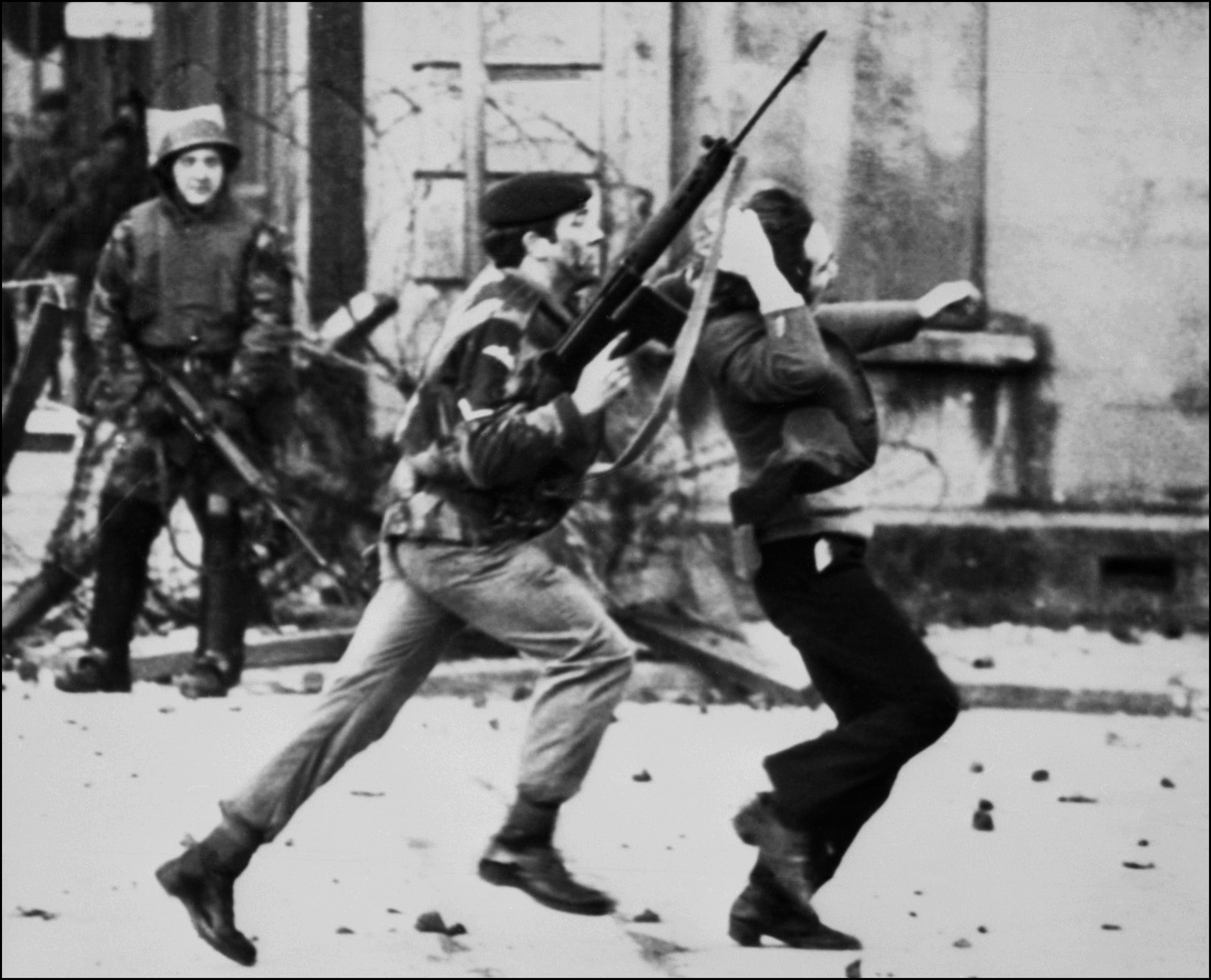
“But do people know about Bloody Sunday in Beirut?” the man asked. No, I said. Not a soul there knew – or cared – what happened here.
Did the young man know what happened in Beirut in November, 1993, I asked? He shrugged his shoulders. Well, I explained, a large group of Shiite Muslim demonstrators – supporters of Hezbollah, but unarmed – had staged a protest march against the terms of the PLO-Israeli peace agreement. The march was illegal. The Lebanese army was ordered to stop the marchers. An “elite” military unit opened fire on the Beirut demonstrators. Thirteen of them – including women – were killed.
The Londonderry man was silent for a long time. The parallels were astonishing, but the two bloodbaths were exclusive to their countries. So all the man said was: “Jesus Christ!”
It is a name much invoked on the Derry/Londonderry memorials. The most dramatic of these is a simple granite cross erected to the memory of the 13 – Duddy, Doherty, McGuigan, Gilmore, McElhinney, McDaid, Nash, Young, Kelly, Wray, Donaghy and two McKinneys – “murdered by British paratroopers on Bloody Sunday 30 January 1972”. Beside it, someone has scribbled a note: “All we need is the truth to help heal the wounds.”
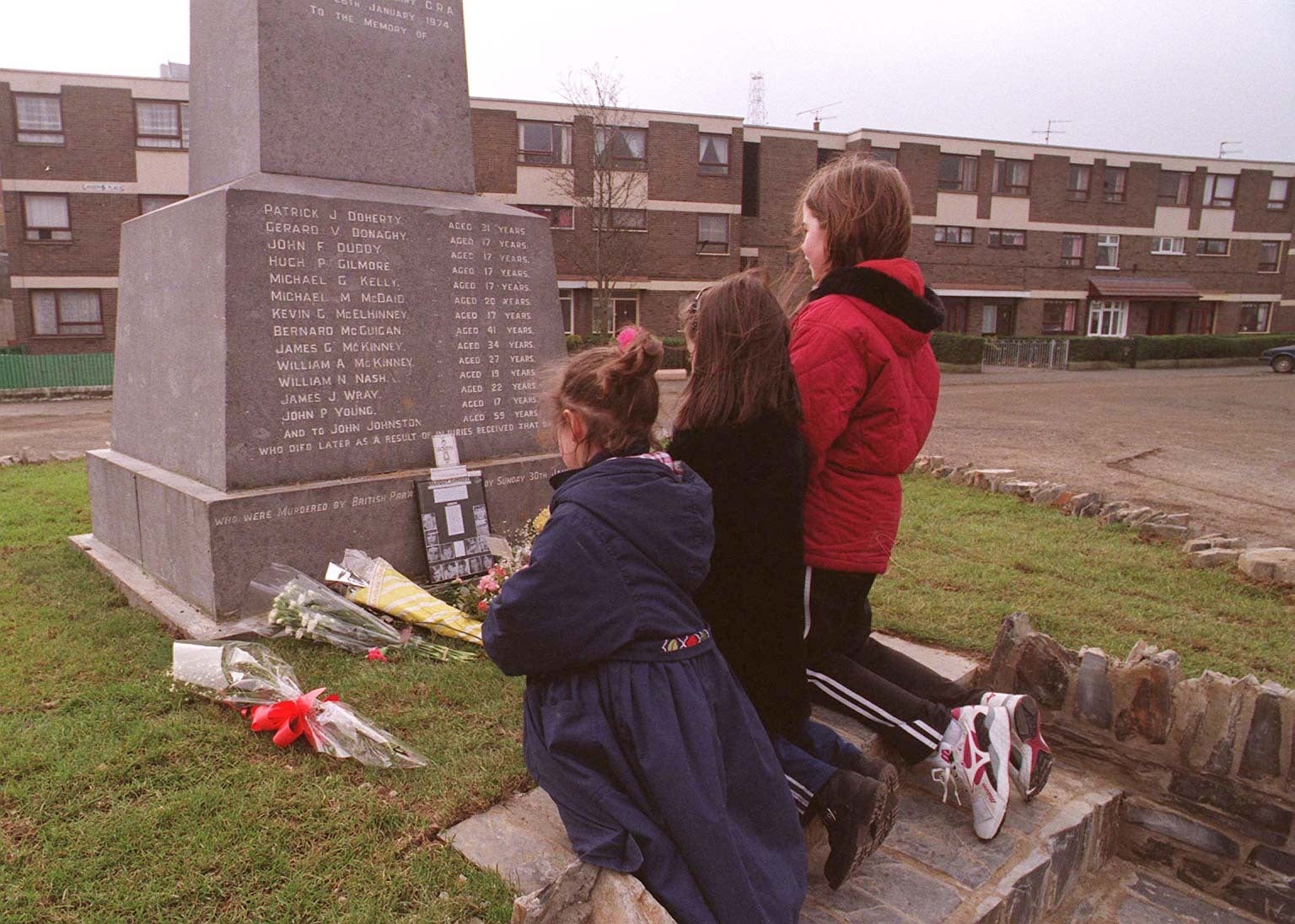
The truth. That is all the people of Qana in Lebanon were demanding in 1996 after Israeli shells slaughtered 101 civilians sheltering in the UN compound. And I rather think the parallels here may be closer. The Israelis said they were shooting back at Hezbollah, just as the British paratroopers claimed they were shooting back at the IRA. There was an international outcry against the massacre but the Israelis insisted the killings were not deliberate, blaming them on the local gunmen, even on the dead themselves for tolerating Hezbollah in their midst. Just as the British ignored the international outrage after Bloody Sunday, insisting that the IRA were to blame, that some of the dead had been armed.
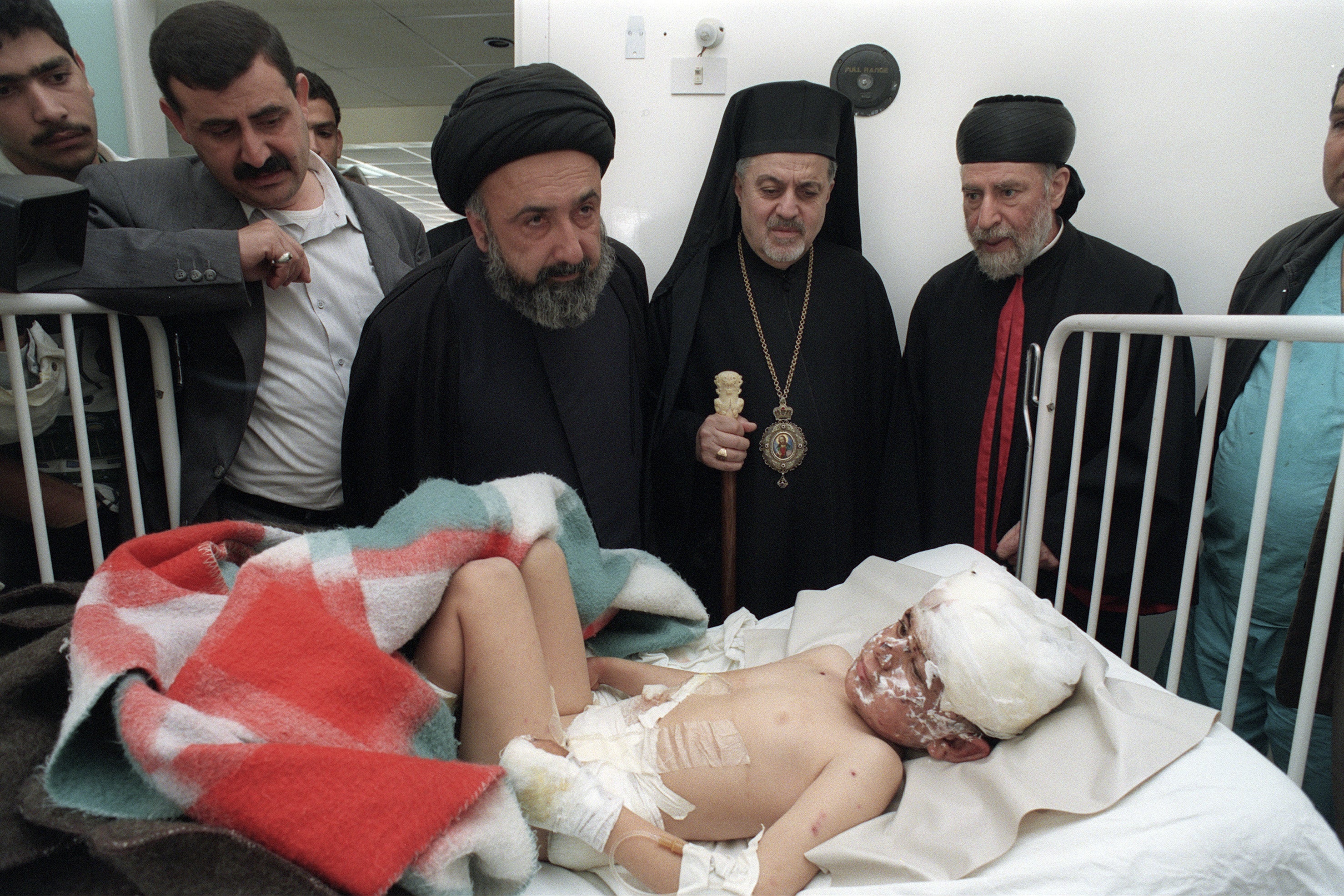
The UN’s official inquiry into the Qana massacre implied that it was deliberate. Lord Widgery was not so brave. Of 500 eyewitness testimonies given to him, he bothered to read only 15. Was he merely lazy? Or was he a weak, morally enfeebled man, more fearful of condemning his country’s armed forces than he was of concealing the truth?
Who would have thought, standing on the frontier of Germany in 1945 with 35 million dead across Europe, that there would be a united Europe 50 years later?
These questions are impossible to avoid in Northern Ireland today when even the Protestant Newsletter – the oldest daily paper in the kingdom – demands an official apology to the families of the victims. By lying about what they could see – the Israelis at first denied there was a pilotless reconnaissance aircraft over Qana – Israel gave Hezbollah its biggest propaganda victory in 14 years. By refusing to admit the truth – that the British Army had committed an atrocity in Londonderry in 1972 – the Westminster government gave the IRA its biggest propaganda victory in 25 years. And the families were doubly assaulted. After falsely accusing the dead of carrying firearms, the British then abused the relatives by claiming that they had allowed the IRA to hijack their grief. As a Catholic priest put it to me in the Bogside, “The IRA hijacked Bloody Sunday because no one else did – if only the British had told the truth at the start…”
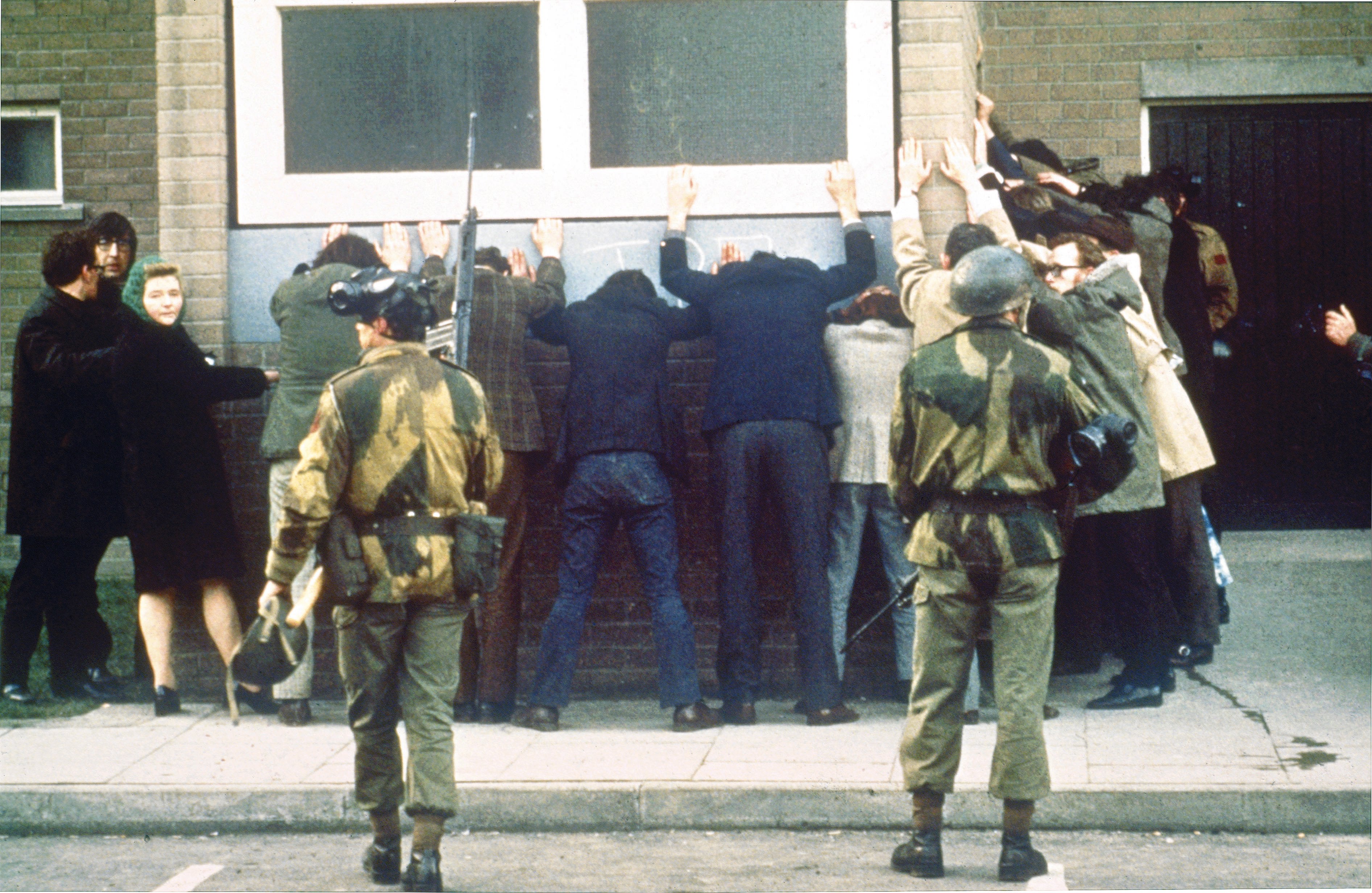
And still Bloody Sunday hangs like a pall over Northern Ireland. John Hume, sick, nervous, popping the occasional pill for his fearful headaches, laments every memory of past violence. As his “peace process” – initiated with great courage after long talks with Gerry Adams – slowly disintegrates, he fears each new reminder of the past, the tensions raised by the Bloody Sunday anniversary, even the appearance at this critical moment of Neil Jordan’s film Michael Collins.
But his mind races brilliantly on, ever broader as the chances of peace narrow. “The model of the European Union should be the model for our healing process,” he says. “Who would have thought, standing on the frontier of Germany in 1945 with 35 million dead across Europe, that there would be a united Europe 50 years later? How did we do it? It’s about seeing difference – race, religion, ethnicity – not as a threat but as an accident of birth.”
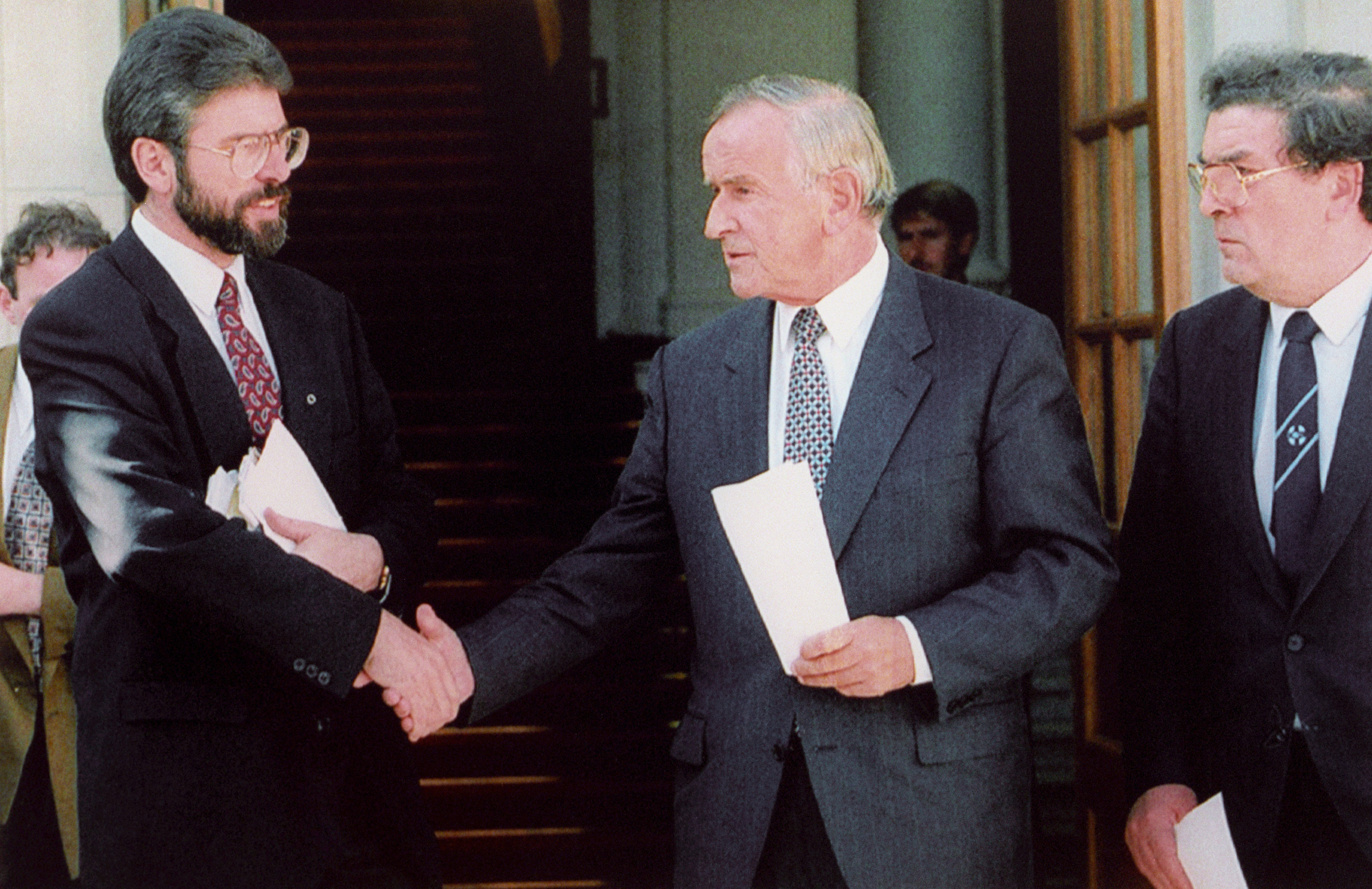
I feel uneasy, listening to Hume. I admire him – he is the first to remind me that he was regularly assaulted and harassed by the IRA and its supporters – but I am troubled by clichés like “healing process”, and I fear that if the European Union is the model for Northern Ireland’s redemption, then the province is taking a very long time learning this lesson. On Bloody Sunday, the British soldier killed on Wednesday night had not even been born. For the truth is that the EU is a piece of state-of-the-art politics in whose far north-western corner there exists a 16th-century war.
Twenty-five years ago, Bishop Edward Daly’s picture was in every newspaper, holding out a bloody handkerchief before the paratroopers as he walked in front of a crowd carrying a dying man. Retired now – his memory failing each eventide after a frightening stroke three years ago – he is still a heroic man.
“The ceasefire was a tremendous opportunity which was not taken,” he says wearily. “I think the British delayed and dallied, made an issue of decommissioning of arms . They don’t seem able to stomach the idea of Sinn Fein being there at the table. Until they can stomach this, I don’t think the peace process is going anywhere… I don’t think anybody in Sinn Fein is looking forward to a United Ireland tomorrow morning.”
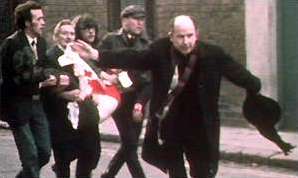
“Not that Bishop Daly is any friend of the IRA. He has been cursed for his condemnation of human wickedness, for refusing to allow IRA funerals near his church. “There was the case of Patsy Gillespie, who was tied into his van and forced to drive towards British soldiers and the bomb went off and killed six of them. At that funeral, I really spoke my mind about the IRA.” And here I remembered searching the previous day in Belfast for an IRA battalion commander whom I knew back in 1974 – “Bald Eagle”, he was called then. I was told he was old now and was only seen at funerals and had already suffered his first heart attack. Did IRA men find their consciences in old age, I asked Bishop Daly, when they could see death coming for them?
“No, Robert, you don’t understand. The time the reality comes crashing in on them is when their first child is born. They have participated in the creation of a life and three months later young men come to me with problems because they have killed someone. This hits them while they are still young and not at such a remove from the act of killing. Some of them have sat here and wept.”
I knelt down on the road surface, Behan-like, and could faintly detect a very slight change in the tarmacadam, perhaps a millimetre difference in the height of the kerbstones. Was this the border?
Bishop Daly has given the last rites to British soldiers, buried Catholic RUC men, but understands the ignorance of the world. “A lot of people in the North are under an illusion – they think the whole world is waiting to see what will happen to them.” And I remembered the man outside Glenfada Flats.
The Catholics may take comfort in demography. As the priest said to me in the Bogside, the quality of houses has improved for Catholics and so emigration will fall. “In the old Unionist days, the Protestants got it absolutely right – they didn’t provide housing for the Catholics. But even without work, a man will stay here if he has a decent home.
“Our figures show that around 55 to 66 per cent of the children in school in Northern Ireland at the moment are from Catholic-Nationalist families. In 1972, there were 39,000 Catholics in Derry. Now there are 68,000. But the X factor is the new housing. It’s a huge revolution that has taken place here.”
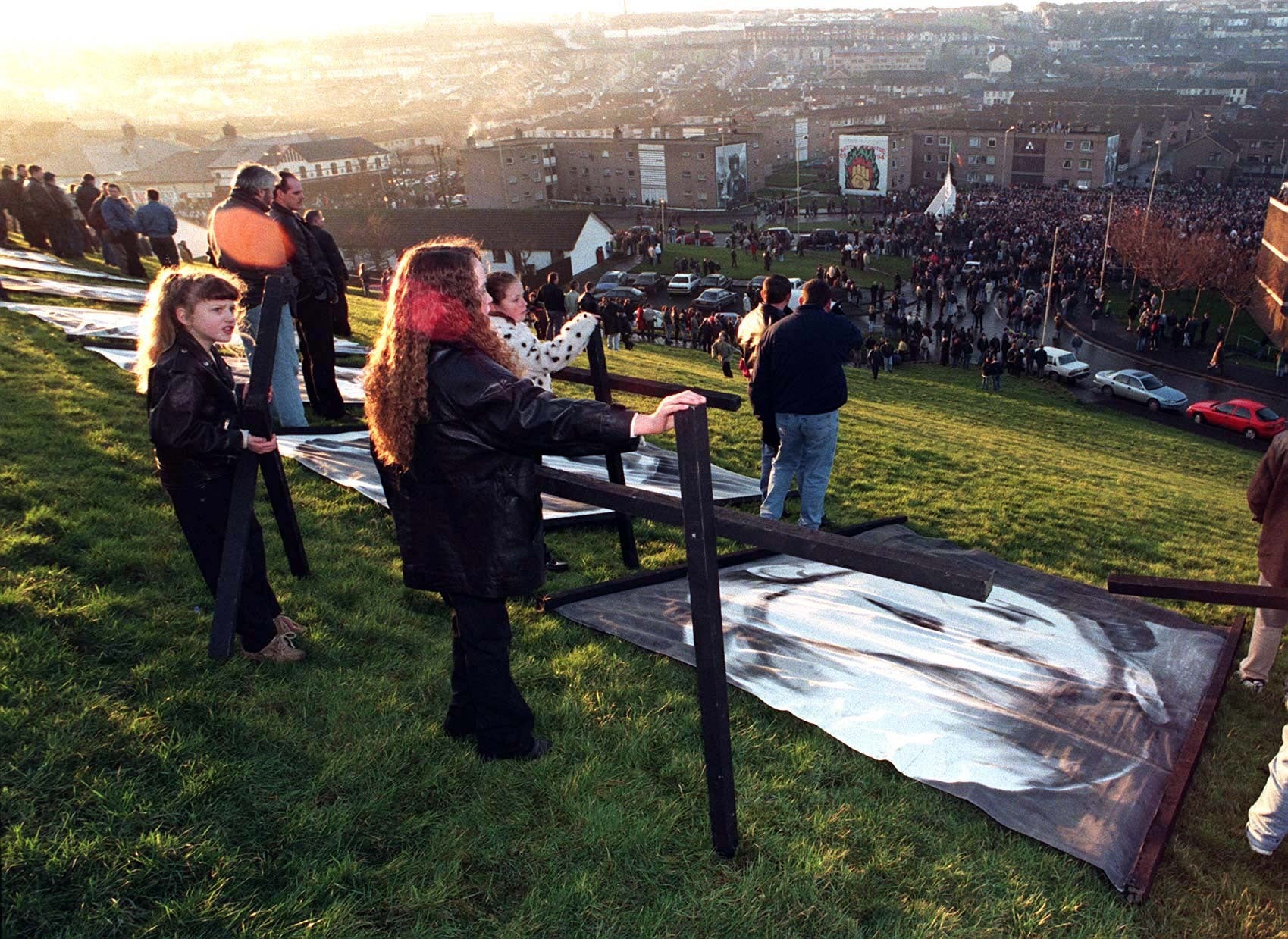
When I asked the priest how long it might therefore be before the minority became the majority, he said, matter-of-factly: “Twenty-five years?” Another quarter of a century and that elusive border would disappear.”
But was this what it was all about? I recalled that the writer Ulick O’Connor had once told me of how an RUC officer had arrested Brendan Behan when he found him on his hands and knees on the road south of Newry. “What are you doing?” the policeman had asked the playwright. “Trying to find the feckin’ border,” Behan had replied. And so I decided to go and look at this mysterious border for which so many had died, for it lay only five miles from Derry/Londonderry.
Along the road to Cosquinn, the rain was drifting across the fields. On the left was a blown-up British army base, on the right another memorial. “In Memory of Patsy Gillespie,” it said. “Civilian, Husband and Father … Lord that he may be an instrument of Your Peace. Presented by the Soldiers.”
Just beyond, so my map suggested, was the border. But I couldn’t find it. I did see an Irish Garda officer on the County Donegal side of the frontier. Where exactly was the border, I asked him? There was a bold laugh. “I really don’t know for certain because I’ve never walked further than this,” he replied. “They say it’s the stream over there and I’ve been told it runs behind that house.” I knocked on the door of the cottage. It was deserted, the wind blowing softly through the trees beside it.
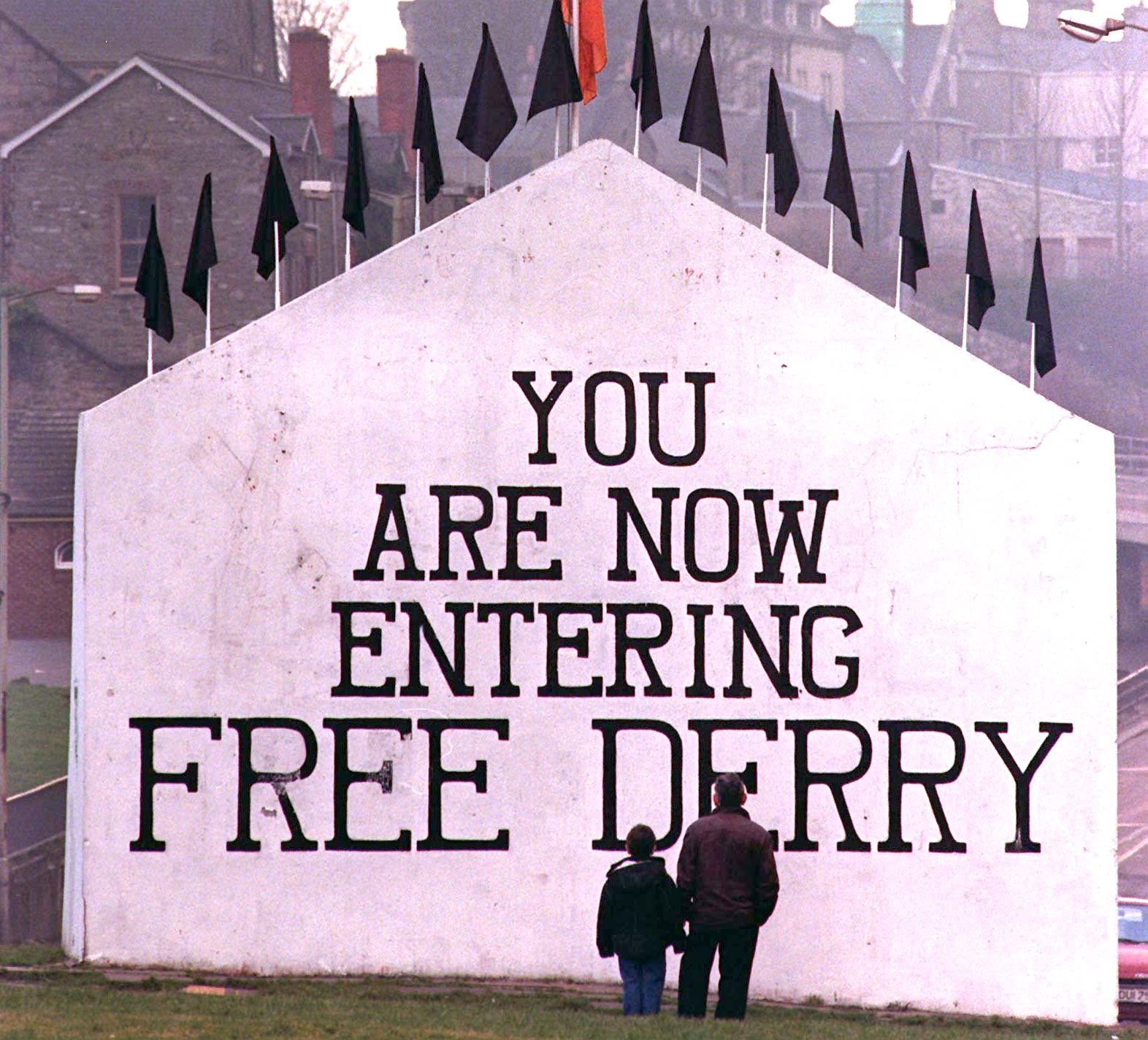
I knelt down on the road surface, Behan-like, and could faintly detect a very slight change in the tarmacadam, perhaps a millimetre difference in the height of the kerbstones. Was this the border?
Behind me, in what must still have been Northern Ireland, was a caravan beside the road. Three children, their mother and father, squashed themselves to the window. They had come from Armagh, the man said. So where, I asked them, was the border? “They say it’s along that ditch to the right of the road,” the man said to me, rubbing his eyes in the cold air coming through his caravan window. “But if you want to know where the real border is, it’s here.”
And he tapped his right forefinger on his head, so loudly that I could hear it banging against his skull.
In January 1998 a new inquiry was announced by the UK government. The resulting Bloody Sunday Inquiry lasted 12 years and the Saville Report was published on 15 June 2010. It demolished the Widgery Report, finding that soldiers lied about their actions and falsely claimed to have been attacked.




Join our commenting forum
Join thought-provoking conversations, follow other Independent readers and see their replies
Comments